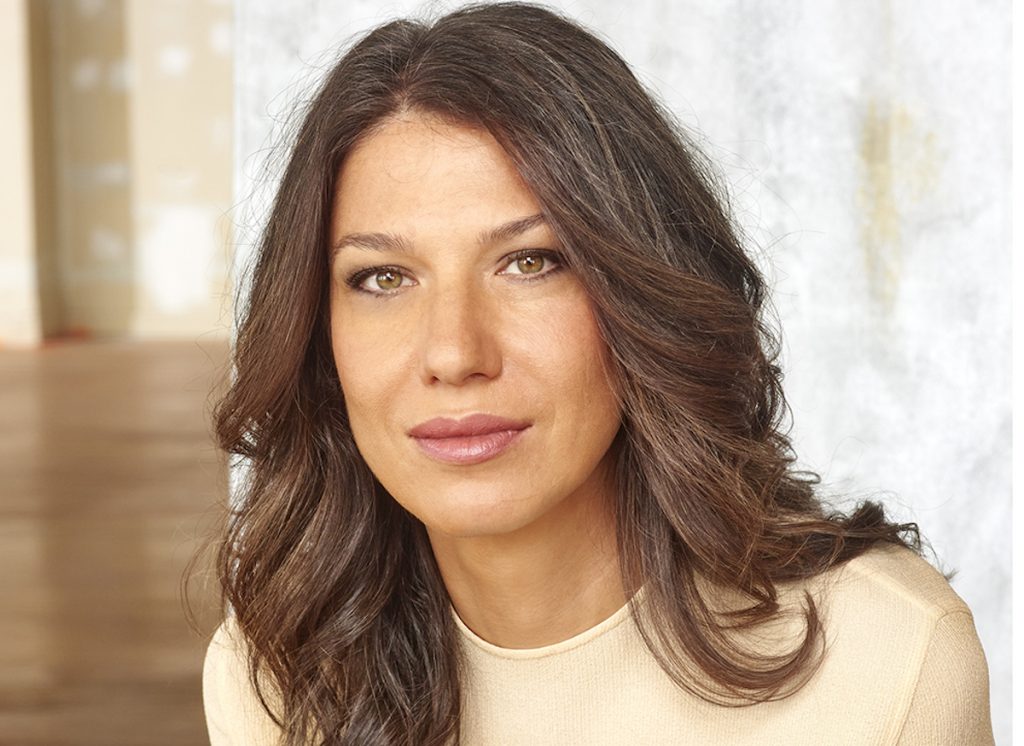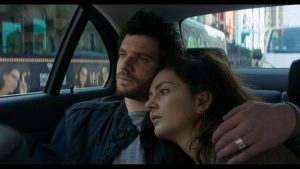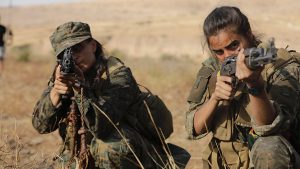
After more than 35 years of operation, TBI is closing its doors and our website will no longer be updated daily. Thank you for all of your support.
TBI In Conversation: Courting co-pros & counting every shot in ‘No Man’s Land’ with Maria Feldman
Israeli producer Maria Feldman talks to Mark Layton about her new war epic ‘No Man’s Land’, why ISIS are terrified of women and the pitfalls of blowing things up in Morocco.
No Man’s Land, the latest action drama co-created by Maria Feldman, the Israeli producer behind Fauda and False Flag, makes its US debut today as a Hulu Original.
The eight-part drama series, set against the backdrop of the war in Syria between ISIS and the YPJ, the Kurdish women’s militia, has already received plaudits after premiering on Arte in France in September. Feldman tells TBI that seeing her earlier projects become international hits inspired her to take this latest series straight to an international audience.
“After making False Flag and Fauda and seeing that they can appeal to an international audience in the original language, it was clear to me that on my next show I wanted to raise money immediately from the international networks and platforms. Because Israeli budgets are very small and I wanted to make a war epic – it’s impossible on Israeli budgets.”
Partnering on the project with series co-creator and long-time friend Eitan Mansuri (When Heroes Fly), his Spiro Films and Feldman’s Masha Productions teamed up with Paris-based Haut et Court TV, alongside Arte France and Belgium’s Versus Production, as well as Fremantle, which is distributing the series, with exec Christian Vesper serving as co-producer.
Securing international partners was central to getting the show on the air, says Feldman. “Once we realised we wanted to do a big war epic in Syria with European characters, we knew we needed French or European co-producers. It couldn’t have been done with just my company or myself. We needed all these different productions and not only because of the funds they brought but also because of their creative input.”
No Man’s Land follows French architect Antoine (Félix Moati), who makes a snap decision to travel to Syria in search of his supposedly dead sister Anna (Mélanie Thierry), who he believes he has seen alive in a news report as a member of the YPJ. However, Antoine soon finds himself out of his depth in a very dangerous part of the world.
Feldman reveals that the series is partly inspired by her own experiences of living in Israel while the war was raging in neighbouring Syria, and her desire to bring the extraordinary story of the YPJ to the rest of the world.
“I watched a news report by an Israeli war journalist and there was this scene with two very young and very beautiful Kurdish women in camouflage clothes with very colourful scarves. One was holding a huge sniper rifle and another one was standing next to her and sounding this shrieking strange noise. I was like ‘what are they doing?’ this is not a good setup for a sniper,” recalls Feldman.
They know that women are the ones shooting at them and they totally freak out, sometimes they even drop their weapons and run away
Maria Feldman
“Then one of the women explained that the reason they are doing that, the reason they are wearing those colourful scarves, is that ISIS soldiers are not afraid of dying in battle, on the contrary they will go to heaven to get 72 virgins – unless they are killed by a woman.
“There is no heaven, no virgins, they are simply dead. Seeing those scarves and hearing those sounds they know that women are the ones shooting at them and they totally freak out, sometimes they even drop their weapons and run away.”
Feldman explains: “I was totally shocked by this revelation. Back then, ISIS was like this terrifying, huge scary force of evil and we were even afraid they were going to invade Israel and all of a sudden hearing they’re afraid of those girls… I thought, we have to show this to the world, nobody knew about it.”
Unsurprisingly, No Man’s Land does not lack for explosive action sequences and Feldman reveals that capturing them on camera was one of the highlights of the shoot, but also provided a particularly laborious challenge.
“The fact that they came out exactly the way we pictured them was amazing. It’s very rewarding to see it on screen,” she says, but also reveals one slight downside to bringing big battle scenes to the screen. “Filming in Morocco with weapons is a big challenge, they are very strict and basically don’t allow weapons in Morocco except for the army and the police. You can’t trade weapons in Morocco, so we had to bring them in trucks from Belgium.
“We had a lot of weapons in this show – a lot of explosives – and whenever you have any functioning weapon on set you have to the Moroccan army on set, so we had an army truck with soldiers with us most of the time. They also have this law that you have to pick up every shell – they had to count how many times we fired and then we had to pick up the shells. They would count the shells and fine you if you don’t find them all – and we shot a lot.”





